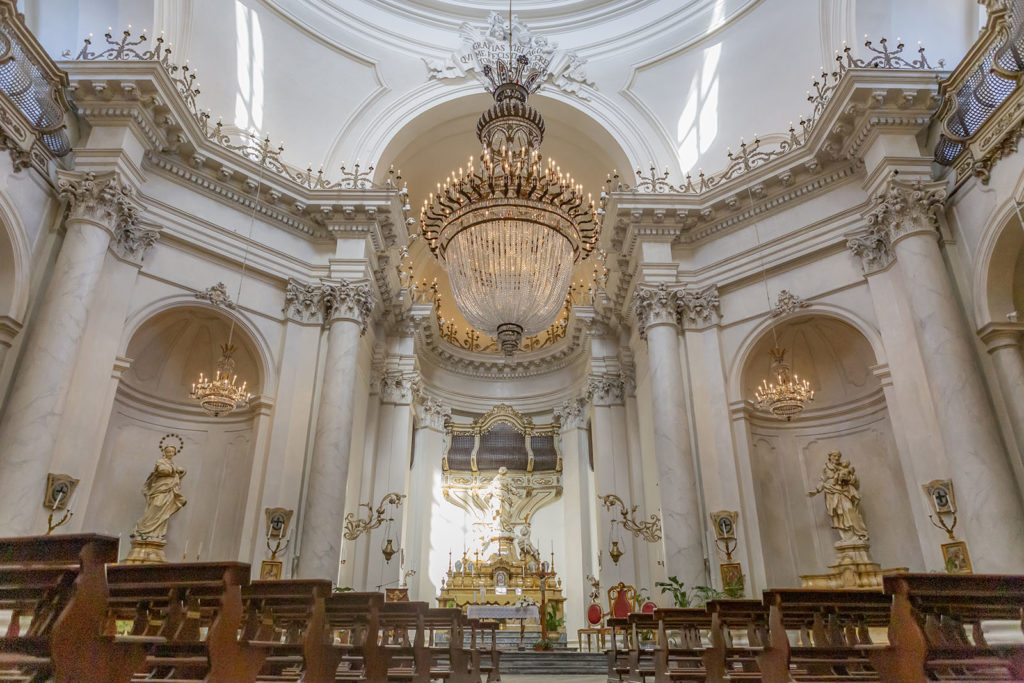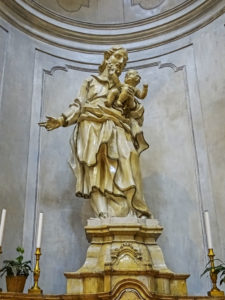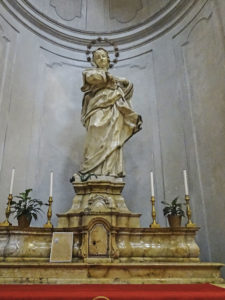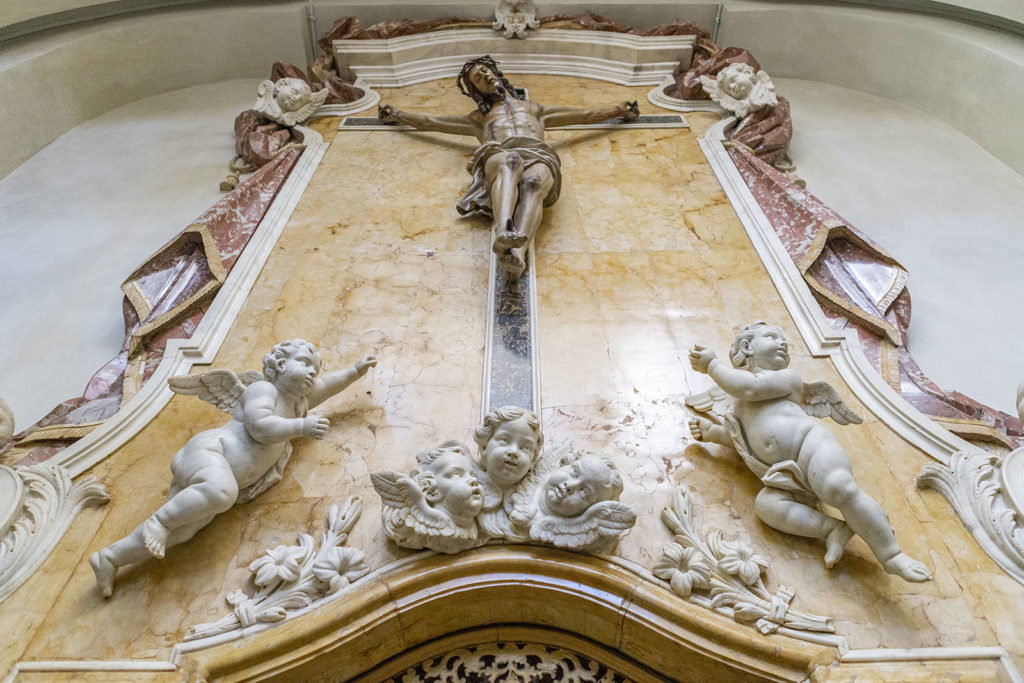The church has a
Greek cross
plan. As you enter, you move from a small room to a large circular space where white is used extensively and gives the room an almost blinding brightness.
The gleam of white is joined by the yellow Castronovo marble altars, located in four large
niches
, where four wonderful statues stand.
 These were created by Giovanni Battista Marino in
marble stucco
These were created by Giovanni Battista Marino in
marble stucco
. As per traditional Baroque sculpture, the clothing of the four characters moves and seems caught in a continuous breeze.
The statues depict St. Euplius, St. Benedict, St. Joseph and the Child, and the Immaculate Conception. Ignazio Carnazza’s work, the Crocefissione (Crucifixion), is another clear example of Baroque art.


In fact, the use of colour is a typical element from the period.
The wooden crucifix rests on a yellow marble background from which a red marble cloth descends. Though made of a hard material, the cloth seems soft. Red was not chosen by chance; the first stone given by God to humans to build the new Jerusalem was in fact red.
The work was commissioned by the abbess Giuseppa Maria Scammacca. The flooring completes the interior. The splendid floor was created by Ignazio Marino’s workshop using one of his designs. Black and white marble covers the entire surface with an abstract design that points towards the centre of the church.
